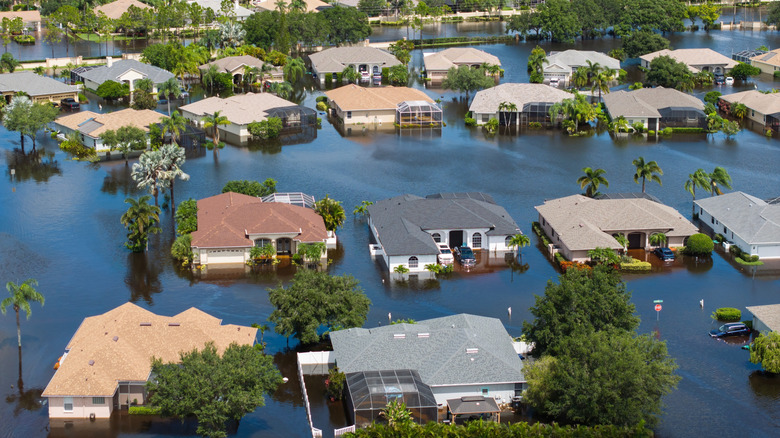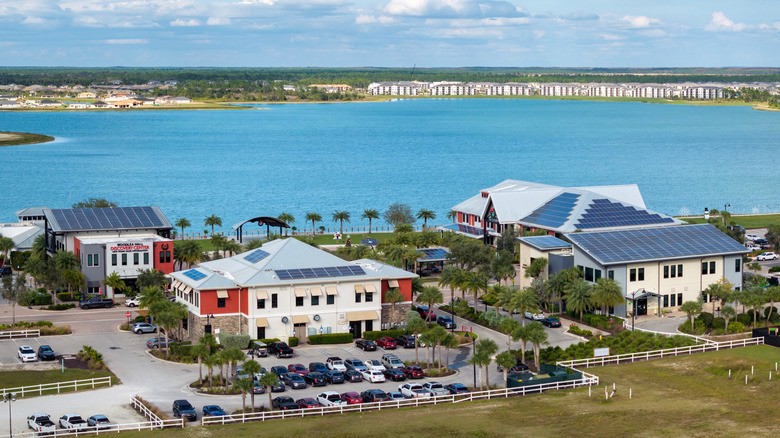Is It Possible To Actually Hurricane-Proof Your Home? What You Should Know
Yes, hurricane-resistant homes exist, but hurricane-proof ones don't. With modern-day weather cycles, even top-tier preparation faces serious tests. The National Oceanic and Atmospheric Administration (NOAA) forecasts a 60% chance of an above-normal Atlantic hurricane season for 2025, driven by near-record ocean temperatures and a transition to La Niña conditions that historically fuel more frequent and severe storms. This increased risk isn't theoretical. A 2024 Nature study found that roughly 85% of recent Atlantic hurricanes underwent rapid intensification. This kind of explosive growth can leave even well-built homes vulnerable.
That means even advanced construction may not match the scale or speed of future storms. A dome-shaped concrete home may survive wind shear, but not necessarily a 10-foot storm surge. And while states like Florida have some of the toughest building codes in the U.S., those codes are minimum standards. Many experts — and resilient communities — are going further by implementing strategies from the Insurance Institute for Business & Home Safety (IBHS) FORTIFIED program, along with custom architecture focused on wind deflection and flood avoidance, as smart storm prep to minimize costly damage.
In other words, hurricane-resistant design works, but only up to a point. No material, layout, or budget can guarantee survival in all scenarios. The smartest move? Combine strong design with smart planning to prepare your home for hurricane season. That includes evacuation readiness, up-to-date insurance, and seasonal home prep that treats safety as a layered strategy, not a single solution.
What hurricane-resistant homes are actually doing right
Some of the most storm-resilient homes in the U.S. are designed with physics, elevation, and long-term payoff in mind. Florida's dome-shaped "Golden Eye" home famously survived Hurricane Michael while its neighbors didn't, thanks to its rounded design and concrete shell. But these builds are niche and expensive. They're a powerful proof of concept, but not a silver bullet for every homeowner.
Prefab builders like Deltec are finding a middle ground: circular homes with wind-deflecting geometry, sealed roof decks, and hurricane-rated windows. One Florida homeowner credits his home's survival to its breakaway walls and elevated design, upgrades that reduced not just storm damage but also insurance premiums. The cost of such homes can more than double that of traditional builds. But even these thoughtful fortifications don't always match what full-scale community planning can accomplish.
Compare that to Babcock Ranch, a town engineered for storms, where homes, utilities, and drainage systems were all built with resilience in mind. After direct hits from Hurricanes Ian and Milton, residents reported little damage and no power loss. By contrast, a couple in Mexico Beach who invested $130,000 to hurricane-proof their traditional home still lost everything to Hurricane Michael, proof that even solid prep can fall short when it's done in isolation. For those unable to rebuild from scratch, there are cost-effective upgrades to protect your house from hurricanes. The takeaway: individualized protection is better than none, but infrastructure-level planning offers far greater durability. If we want to truly get closer to feasible "hurricane-proof" homes, we'll want to dream bigger and imagine an Atlantic coast dotted with Babcock Ranches.

